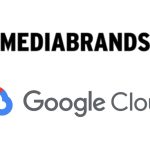By Mark Tungate
What is “the entertainment industry” today? While Hollywood stars still stride up the red carpet (although this year it was champagne-coloured) for the Oscars, cinema’s share of our attention has shrunk.
Traditional TV channels are also finding it hard to compete with streaming, social media and gaming.
So what does this mean for agencies and brands? We posed six questions to Dentsu Creative’s cultural and social specialist.
With the rise of social media “creators”, the border between agency creatives and consumers has blurred. How can agencies take advantage of this?
Bruno Laporte: There was time when agencies created culture, defined trends and nurtured talent. But the internet and the social networks have democratized the creation of content. They’ve also regrouped audiences according to their passions and centres of interest.
That’s impacted not only advertising, but cinema and television too. Instead of a global popular culture, you now have a number of micro-cultures that are constantly evolving, but have little connection with each other.
A Gen Z consumer can spend hours watching content about a specific subject on YouTube, even if nobody else in their circle shares that interest.
So while agencies have a lot to offer from a creative, conceptual and strategic point of view, there’s a clear advantage to collaborating with content creators, because they’re the most connected with these communities, while also being authentic and trusted.
They can bring us an enormous amount of input and creative ideas. The key is to integrate them and benefit from their strengths while adding our own expertise and understanding of brands.
The “metaverse” has been a buzzword for a few months. What are the opportunities for brands right now?
At Dentsu we have a saying: “The metaverse is near, but not here.” I’m convinced the metaverse will arrive in one form or another, but right now it doesn’t exist.
All the brands, agencies and tech players who say they’re doing things in the “metaverse” are really talking about video games, web3 or virtual reality, but it’s not the metaverse as a shared immersive space that we see in science fiction movies…
Like “Ready Player One”?
Exactly: that’s some way off. But maybe there’s another way of looking at the metaverse. Maybe it’s the moment you realise your “digital” life is almost as important as your physical one, if not more.
And for some people that’s already the case. While I don’t spend all my time in a virtual space, I pass from the physical to the digital world in a way that’s native, fluid and direct. For me that’s a kind of metaverse.
VR devices like the Oculus Rift were talking points at Cannes a few years ago, but at this point I haven’t seen a huge enthusiasm for them among consumers or brands. Why is that?
With VR we’re at a similar stage that we were at in the late 1990s, when there were mobile devices like the Palm, which could already access the internet and download applications, but they were reserved for a niche group of professionals and geeks.
They weren’t used by the general public. So what we haven’t seen yet in the VR field is the “iPhone moment” – the device everyone wants. VR devices are still relatively expensive and cumbersome, and the content is not extremely well-developed.
It’s often been said that gamers are allergic to commercial messages in their environment. Has that changed?
You’re talking about a huge audience: the most recent figure is 3 billion players worldwide, almost half the world’s population. Not everybody in that audience thinks the same thing! It embraces people who follow e-sports to those who play casually on their phones.
In fact at Dentsu we launched a study that segmented gamers by their reasons for playing. The profiles included people who play to compete; people who play to escape; those who play to pass the time; those who play with friends… It enabled us to identify new target audiences and highlighted the wide variety of gamer profiles.
Historically, advertising aimed at gamers first appeared in mobile games, where they were intrusive, interfered with the game and weren’t targeted to the user. So there was a kind of rejection of advertising.
But now there are a number of advertising formats that actually augment the gaming experience, either with premium content, the ability to win an extra life, or bonuses. Post-2020, within games like Fortnite, Roblox or Minecraft, brands have found a way of creating entertainment, advantages or services that players really appreciate.
I’ve been observing the emergence of e-sports agencies for a few years now. How are larger agencies competing with these smaller and agile competitors?
Bigger agencies have always collaborated with specialist agencies, and they can certainly do that in this case. Above all, the big agencies have global networks.
Here at Dentsu we have a large international community around gaming, with experts from every country who collaborate and share experiences.
So we have a resource we can turn to in order to respond to a need. Dentsu also has a historic anchor in Japan, where we collaborate with all the biggest games producers. That’s an eco-system smaller agencies can’t offer.
Streaming services like Netflix now dominate the audio-visual entertainment industry, and they’re ad-free. How do agencies engage with these new giants?
Firstly there’s product placement, as we’ve seen on Netflix with Pepsi in “Stranger Things” or McDonald’s in “Emily In Paris”.
And while it’s true that until now there hasn’t been advertising on the big streaming platforms, Netflix, Disney+ and Amazon Prime have announced or are testing cheaper subscription models that include advertising. Not everyone can afford to have three or four subscriptions, so clients are cancelling.
In order to keep them, the streamers can offer them a cheaper deal supported by advertising.
It’s the revenge of advertising!
You could say that, yes.
MARKETING Magazine is not responsible for the content of external sites.











